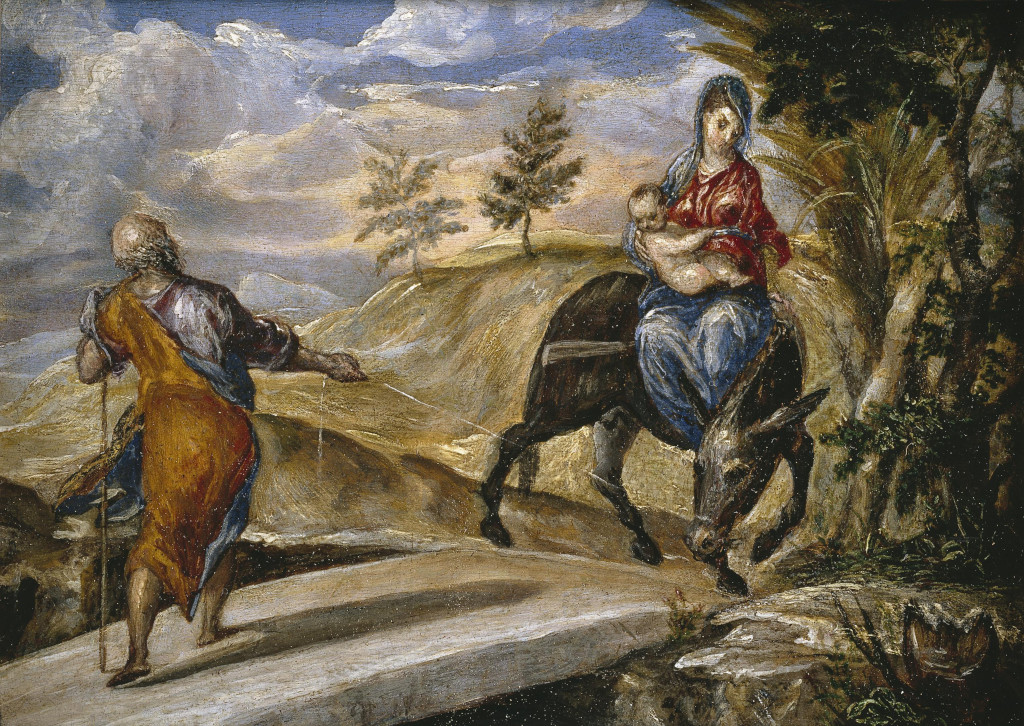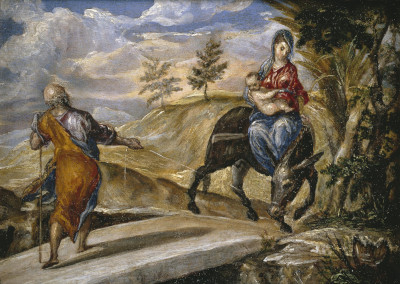The Flight into Egypt is a classic religious scene which has appeared in the careers of many notable artists. Here we find El Greco's contribution from around the year 1570.
The artist would have been in his late twenties at the time of this painting and was still very much under the influence of Cretian and Italian art at this stage. It would be around seven years before he moved to Spain for the next stage of his artistic evolution, and prior to that his approach was somewhat more traditional. Crete was part of the Venetian Republic at the time, and so the Venice School would play a major role in introducing him to the various techniques of painting. He would keep many of these ideas throughout his career, slowly combining them with other influences which came into play as his life progressed. The Flight into Egypt represents a very Italian style of painting, without the expressiveness which appeared later in his life. It therefore teaches us much about the grounding that he received as a young man, and the direction that he had been encouraged to take, prior to maturing into a confident individual who would bring his own ideas to the table.
This painting is only 21cm by 16cm, approximately, making it one of the smallest artworks ever produced by El Greco. It is likely that an item of this size would have been used for private devotion, or, in other words, hung within a domestic home. Experts from the Prado Musem, where it is to be found today, have connected this piece to Venetian influences, and perhaps that is most obvious in the bright tones used for the sky and the figures' clothing. The scene itself captures the point at which the Holy Family head to Egypt, attempting to escape Herod and his forces who wish to execute the young child. It is mentioned in Matthew 2: 13-14, where the family is advised within a dream to head to Egypt and seek refuge until told otherwise. They followed this advice and set out on this long journey. El Greco's version features rolling hills in the background and a bridge in front which they cross cautiously, whilst perhaps feeling the effect of this long journey.
Studies into this painting have revealed it to be first mentioned in around 1682, when it is believed to have been on display at the Palazzo della Vigna. Its history is relatively comprehensive as compared to other paintings by the artist which may not have been discovered until centuries later, or instead were mis-attributed to another for many years. Its location at the Prado ensures that its long term is assured, and that any last detail that might be uncovered about it will likely be found at some point in the future. To host many of his paintings under one roof also makes it easier for historians to compare the different periods of his work and also to check all attributions once more, using the latest scientific techniques. The Flight into Egypt remains one of the artist's smallest pieces and is amongst the most interesting examples of his Italian period currently available.





